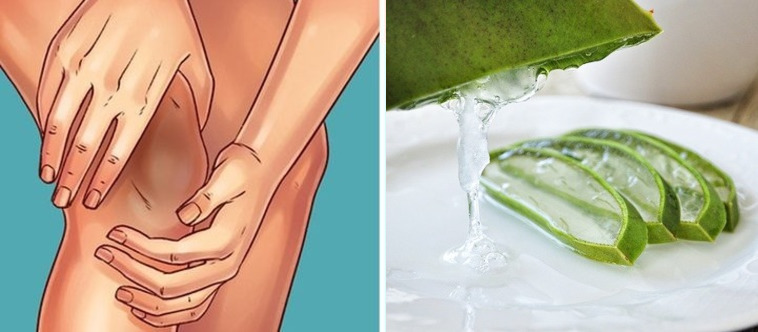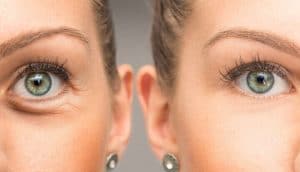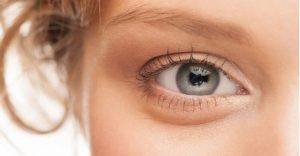Some studies have found that aloe vera might be useful in healing first to second-degree burns, including mild sunburns [1, 2, 3, 4, 5].
Eczema, cold sores, dry skin and psoriasis are other skin conditions that aloe vera is suggested to be beneficial for [6, 7, 8, 9, 10].
It is claimed that aloe vera gel can also lighten dark knees!
How accurate is this? Can topically applying aloe vera help you get rid of the darkness on your knees?
What does science say about the (claimed) skin-whitening property of aloe vera?
The Immediate Answer
Aloe vera gel may help lighten dark knees, especially if caused by UV radiation.
In other words, if you developed dark knees due to unprotected sun exposure, applying aloe vera to your knees may help you combat this aesthetic problem.
However, if you want to completely get rid of dark knees, aloe vera may not be enough in that case!
What Does Research Say?
It is necessary to indicate that there is a limited number of studies that have examined the effect of aloe vera on darkened skin.
To our knowledge, there are only 4 studies on this topic, one of which is an animal study.
In one study – published in Clinical and Experimental Dermatology – researchers discovered that the aloesin compound in aloe vera can suppress UV-induced hyperpigmentation to a certain extent.
Another study – published in the International Journal of Cosmetic Science – found that aloesin prevented hyperpigmented laboratory-made human skin from producing more melanin.
In a more recent study – published in the Pigment Cell & Melanoma Research – researchers concluded that aloesin has an inhibitory effect on tyrosinase activity, which plays a key role in the production of melanin.
Overview
The existing studies on this topic – although not enough to draw any firm conclusions – are suggesting that aloe vera might be a natural and safe way to lighten dark knees.
Below we will review some of these studies to be able to understand why the researchers suggested aloe vera as an agent that may inhibit excess production of melanin, which is the cause of dark knees.
If you want to use aloe vera to lighten your dark knees, below we’ll also tell you how you can apply it to your knees.
Firstly, let’s discover the basics of dark knees.
Dark Knees
Dark knees occur when the skin on the knees becomes darker than the surrounding areas. This is a form of hyperpigmentation [11, 12, 13].
Hyperpigmentation is caused by excessive melanin production. Melanin, by the way, is a pigment that determines the hair, eye and skin colour of a person [14, 15].
Dark knees are mostly harmless and very common, especially among people with darker skin tones. That is because people with darker skin tend to produce more melanin compared to those with lighter skin [16, 17, 18].
What Causes Dark Knees?
Above, we indicated that excessive melanin production causes dark knees. The question is; why does the skin produce too much melanin?
Many things can cause the skin to produce too much melanin either in the knees or other parts of the body.
Here are some common causes of excess melanin production:
- Unprotected sun exposure
- Hormonal imbalance
- Chemical or physical injury
- Accumulation of dead skin cells
- Chemotherapy drugs
- Eczema
Please note that the skin on the knees is prone to dryness and dry skin can accentuate the appearance of dark knees.
Studies on Aloe Vera and Dark Knees
We now know that dark knees aren’t harmful and everyone can experience them at some point in their lives.
Nevertheless, you might be wanting to lighten them for aesthetic reasons.
Above, we said that there are studies that suggest; aloe vera gel may help lighten darkened skin to a certain extent. Here are the details of some of that studies.
A 2002 Study
In the study, conducted in 2002, researchers aimed to evaluate the inhibitory effect of aloesin – a compound found in aloe vera – on pigmentation in human skin that was exposed to UV radiation.
The Details
A group of healthy male Koreans took part in the study. Four areas – each area approximately 12 square millimetres in diameter – on the inner forearm of each participant were simultaneously exposed to UV radiation to trigger melanin production.
Thereafter, researchers applied:
- nothing to the first UV-irradiated area, which was the control group
- 100 mg aloesin to the second UV-irradiated area
- 100 mg arbutin to the third UV-irradiated area
- Both arbutin and aloesin each 100 mg to the fourth UV-irradiated area
Note: Treatments were applied 4 times a day for 15 days.
The Results
Aloesin’s administered area showed 34% less skin pigmentation compared to the (control) group.
Arbutin administered area showed 43.5% less skin pigmentation compared to the (control) group.
Both aloesin-arbutin administered areas showed 63.3% less skin pigmentation compared to the (control) group.
Conclusion
Upon the findings, researchers suggested that aloesin might be used as an agent that inhibits UV-induced melanin production.
A Study With Laboratory-Made Human Skin
In this study, researchers aimed to observe the effects of aloesin on the production process of melanin pigment, namely melanogenesis.
The Details
In the study, laboratory-made pigmented skin was used, instead of authentic human skin.
Researchers examined the effects of aloesin on tyrosinase activity and the formation of melanin in lab-made skin, which is suggested to be equivalent to human skin.
The Results
The results showed that aloesin (that exists in aloe vera) had direct inhibitory effects on the production of melanin pigment and provides dose-dependent reductions in melanin content and tyrosinase activity.
Conclusion
On the basis of the results; researchers suggested that; aloesin might be used as a pigmentation-altering agent for cosmetic applications.
How to Apply Aloe Vera To Knees
You can obtain aloe vera gel directly from the aloe vera plant or buy it from pharmacies or herbal stores.
On the basis of the related studies; applying aloe vera as indicated below might help you lighten dark knees.
Take 1 tablespoon of aloe vera and apply to your knees gently with clean hands. Do it a couple of times a day, 4 to 5 days each week for 2 weeks.
Any Side Effects of Applying Aloe Vera Topically?
According to National Center for Complementary and Integrative Health ( NCCIH ); topical use of aloe vera is safe for most people.
That said ( although it is rare ) you may be allergic to aloe vera. If you experience skin irritation after using it, stop applying aloe vera on your skin and wash the area with water.
When to See Your Dermatologist
You can try natural remedies such as aloe vera to lighten dark knees, elbows or underarms. They may work and help reduce excess skin pigmentation.
However, if the darkening of your knees is increasing your stress levels, thus, affecting your well-being, we strongly recommend you to work with your dermatologist.
Your dermatologist will examine your skin and apply the best treatment according to the underlying cause. While you are there, you can also ask about the effectiveness of aloe vera gel in lightening dark knees.
Conclusion
Throughout the article, we discussed the effectiveness of aloe vera gel in reducing hyperpigmentation.
As mentioned earlier, there is not enough scientific research on this topic, so we can’t say aloe vera will certainly be useful for lightening dark knees.
Having said that, based on the studies that we examined above, it should be safe to say that aloe vera may be a potential and natural way to lighten dark knees and this is especially true if the cause is UV radiation.
Assess the whitening impact of aloe vera on your knees yourself. It may work for you. At least, aloe vera is not harmful.
For the best result, consult with your dermatologist.




